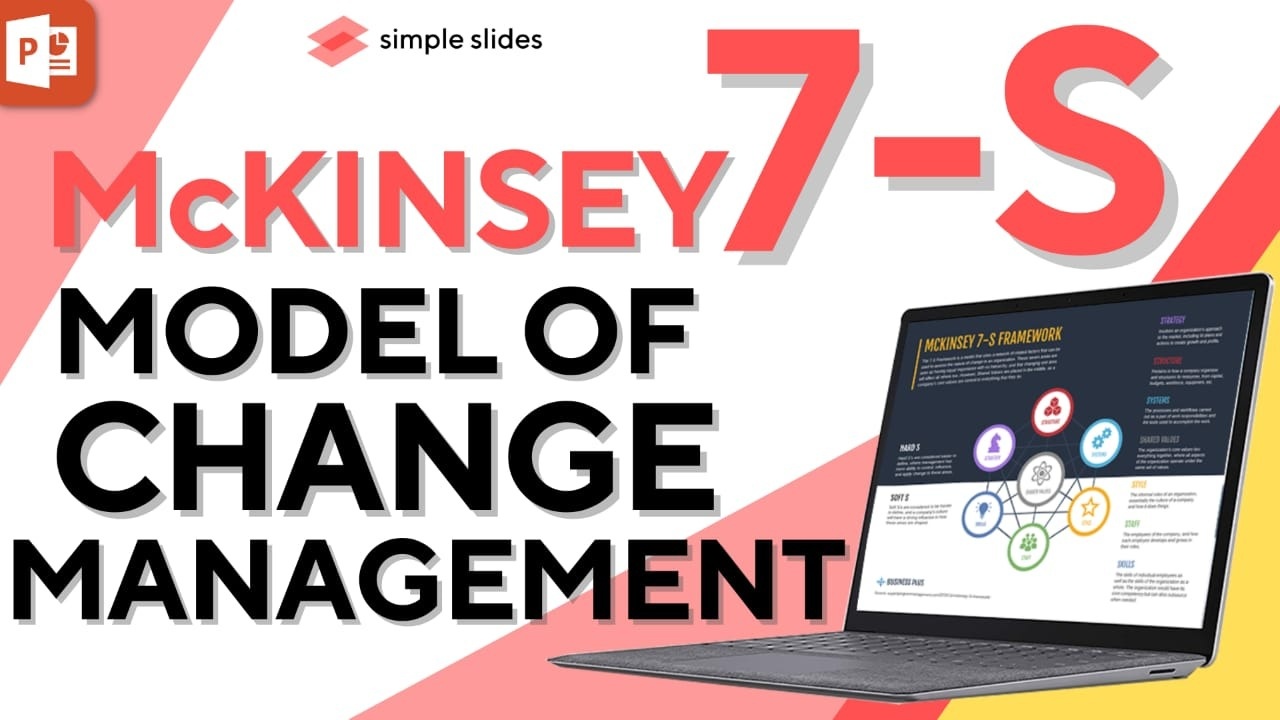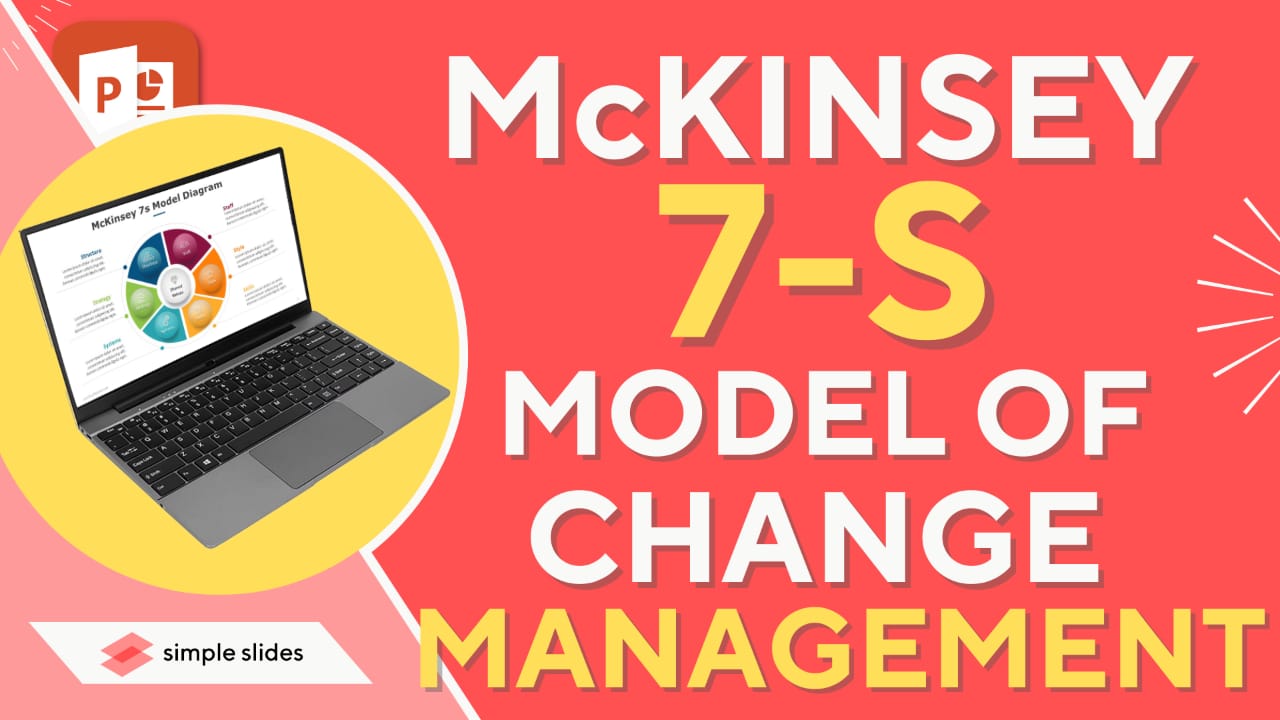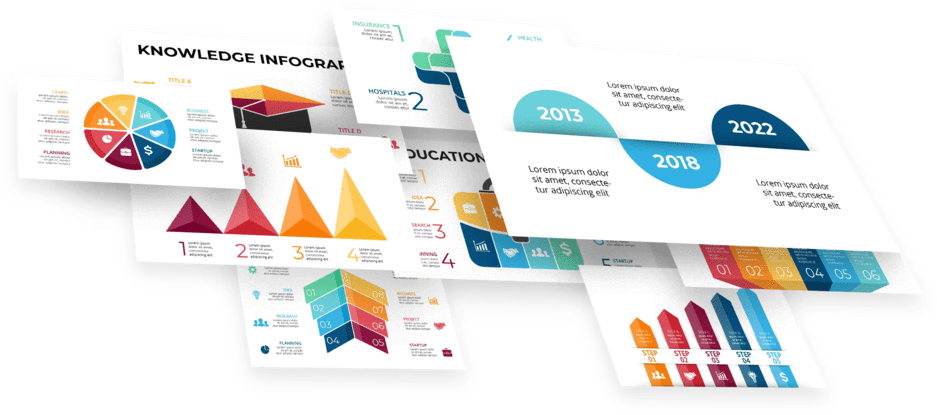Using the McKinsey 7s Model in Change Management
Nov 11, 2022
Tom Peters and Robert Waterman introduced the McKinsey 7s model in the 80s to analyze the internal elements determining an organization's success. However, change leaders and managers have reaped the rewards of applying this model to change management.
So, what is the McKinsey 7s model, and how can it aid your change initiative? Find out in this article.
What Is the McKinsey 7s Model?
The McKinsey 7s model of change management is a framework that links organizational change to organizational design. It helps change managers manage transitions by working with seven interconnected elements known as the 7-s.
These seven key elements include:
- Structure
- Strategy
- Systems
- Shared values
- Skill
- Style
- Staff
Complex Elements and Soft Elements.
We can split the seven elements into two categories: hard and soft.
Hard Elements.
Problematic elements are easily identifiable elements under the management's control. They include:
Strategy: Strategy represents your company's plan for achieving its goals and gaining a competitive advantage.
Structure: Structure refers to your company's hierarchy, the chain of command, and reporting relationships.
Systems are the daily activities the employees perform to keep the business running.
Do you need to analyze your business? Download our SWOT analysis template.
Soft Elements.
The remaining elements in the 7s model fall under this category. They are culture-driven and challenging to define.
Shared Values: These are your company's core values. In the model's design, we place this element at the center to show that it affects the other elements. It is where the other elements originate.
Style: This is your organization's leadership and management style.
Staff: This is your company's human resources.
Skills: Skills refer to the competencies and capabilities of your staff members.
For optimal organizational performance, these elements must balance and complement one another.

Applying the McKinsey 7s Model of Change Management.
You can apply the McKinsey 7s model in five steps for your change initiative. We have explained the steps below:
Step 1: Identify Gaps.
Start your change process by searching for gaps in your organization's performance. Analyze the hard and soft elements individually to understand where you lack alignment. From there, the top management will know what elements require modifications or if an organizational change is necessary.
Step 2: Figure Out the Optimal Organizational Design.
After identifying the gaps and the necessary changes to attain alignment, you can determine your organization's ideal design. However, this process isn't straightforward.
Research extensively with your team and discuss with key stakeholders to discover your optimal organizational design. Once you can envision the new organizational structure, you can start planning your changes.
Step 3: Develop an Action Plan.
Once you know your optimal organization design, developing a comprehensive action plan is time. Your action should include all the company's steps to arrive at the ideal structure.
Step 4: Execute the Change.
You can start making the necessary changes, but you must be careful. If not, your change initiative may fail. You can choose change leaders or hire a management specialist to ease the process.
Step 5: Review Your Results.
The elements in the 7s model are constantly evolving. After completing the change, continue tracking them and make necessary updates.

Example.
Let's assume that a company wants to apply the McKinsey 7s model after completing a merger. The addition of new staff will affect other elements of its organizational structure.
Using the Mc-Kinsey model, the change leader can identify areas with poor alignment. Research could show company strategy, structure, skill, and staff issues. The top executives can then make the necessary changes to attain the optimal organizational design.
Please don't start your project without our communication plan template.
Download a McKinsey 7-S Model PowerPoint Template.
Do you need to present the McKinsey 7s model to your team or top management? Save time and energy with our professional 7-s model presentation template. It works perfectly on PowerPoint, Keynote, and Google Slides.
Frequently Asked Questions:
What is the McKinsey 7s framework in change management?
The McKinsey 7s framework is a change management tool focused on organizational design.
What do the 7s in the McKinsey 7-s model stand for?
The 7s in the McKinsey 7-s model represent:
- Structure
- Strategy
- Systems
- Shared values
- Skill
- Style
- Staff
What are the soft elements in the McKinsey 7-s model?
The soft elements in the McKinsey 7-s model include shared values, skill, style, and staff.
Related Articles:
Get A Free Sample of Our Award-Winning PowerPoint Templates + University
Get A Free Sample of Our Award-Winning PowerPoint Templates + University
Join our mailing list to receive the latest news and updates from our team.
Don't worry, your information will not be shared.
We hate SPAM. We will never sell your information, for any reason.





